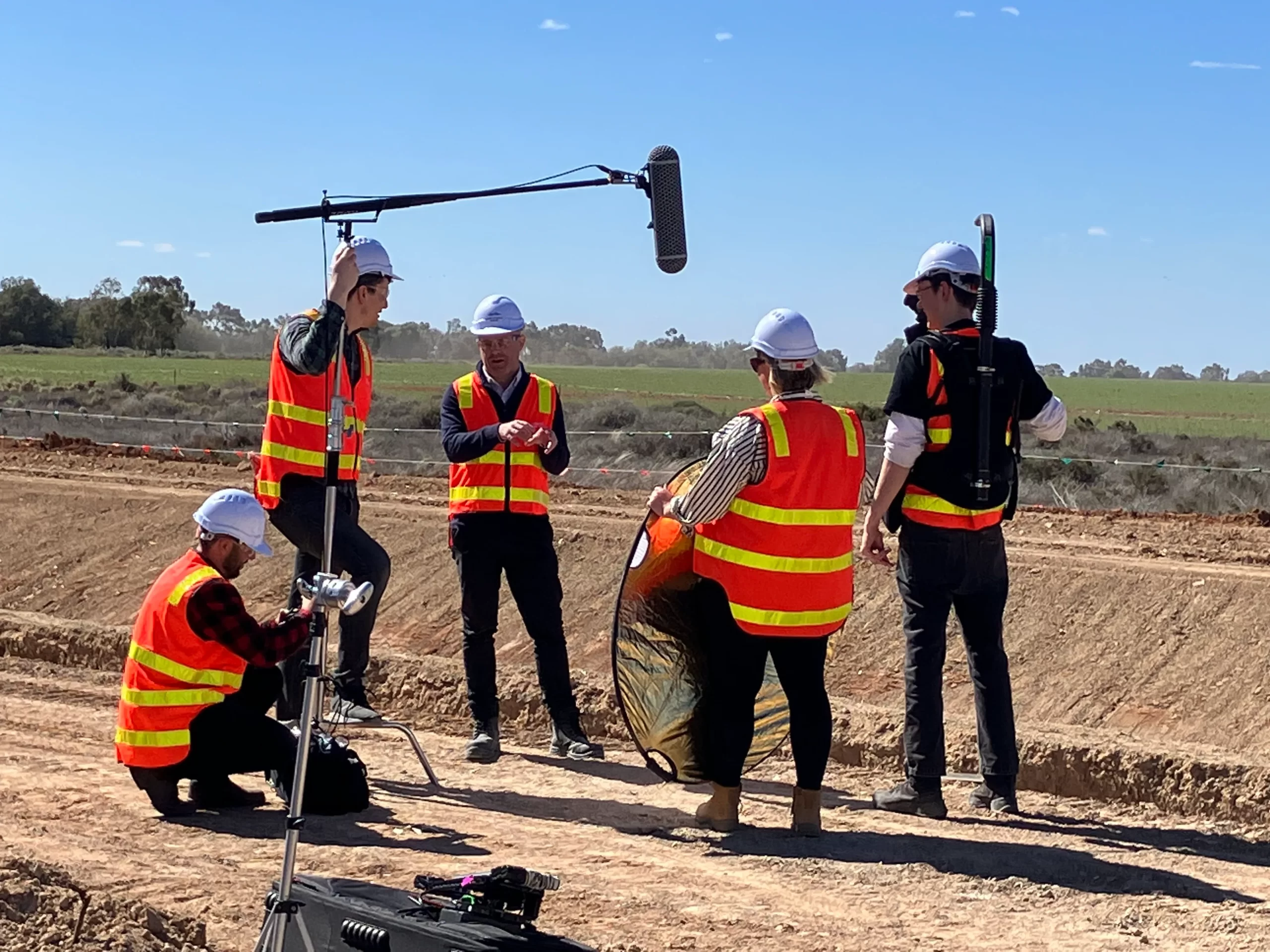If you’re a project manager or part of a project delivery team, at some point, you’ve likely told your comms and engagement team you have news that must be told via a video. And if so, you’ve probably heard from your comms team, “Stop jumping straight to tools!”
We get it, many people gravitate towards video when they have something to share, it’s a compelling medium! But it isn’t always the most effective tool. Video is often, at best, a supplementary medium to other tools – like how-to guides, information sheets, and newsletters.
So, in what instances is video the only option for telling your story?
1. Showcasing progress and impact
People are drawn to transformation stories because they reflect the human desire for improvement. That’s why one of the most effective ways to maintain community interest in a project is by showcasing its progress.
Consider creating a series of short videos highlighting milestones, challenges, and successes. For example, documenting the construction of a new playground can highlight each phase, encouraging the community to celebrate progress together.
And for the project team – not only does this medium get eyes on your project, the transparency fosters trust and demonstrates accountability. So it’s win-win!
Best for: Stories where change over time is central, such as project progress, “before and after” transformations, or time-lapse sequences.
Why: Only video can show real-time or sped-up movement, making it the best medium to tell dynamic stories.
2. Stories where emotional connection is at the centre
Video has a unique ability to evoke emotions. Through compelling visuals and personal testimonials, you can illustrate the human impact of your initiatives.
Importantly, if people are central to the narrative, video lets them share their story. Not only is this the right thing to do (in the vein of “nothing for me, without me”), but it also cuts through and connects more effectively with audiences.
It offers a kind of authenticity resonates instantly.
Best for: Stories that rely heavily on emotional connection, empathy, or inspiration (e.g., personal narratives, customer testimonials, advocacy campaigns).
Why: Video’s combination of visuals, music, and body language allows for a depth of emotional expression that text or static images can’t match.

3. Storytelling with limited literacy or diverse audiences
Are your stakeholders from a background where English isn’t their first language? Did you know that older refugee and migrant communities may not be able to read or write in either their native language or English? Translating written text isn’t always enough.
Or perhaps you’re targeting a demographic with low literacy. In Australia, about 44% of adults read at literacy levels 1 to 2 (a low level), while only 15% read at the highest levels (4 to 5).
It’s all about knowing your audience. Video offers a way to share information that most audiences can understand, regardless of their literacy level.
Best for: Reaching audiences who may struggle with reading or for multilingual audiences where subtitles can be added.
Why: Visual storytelling and audio can transcend language barriers and literacy levels more effectively than text-heavy formats.
4. Engaging with audiences on social media
If you’re targeting your demographic or community on social media, video is a no-brainer. Platforms like Facebook Reels, Instagram, YouTube, and TikTok all prioritise video content, meaning your message is more likely to reach and resonate with viewers.
Short, impactful videos can quickly draw in viewers, spark interest, and encourage them to learn more about your project.
Best for: Grabbing attention quickly and creating shareable content for social platforms.
Why: Short-form videos have higher engagement rates on platforms like Instagram, TikTok, and Facebook, especially when designed for mobile consumption.
5. Demonstrating complex processes or products
If you’re trying to convey complex technical instructions — like how to use software or a complicated device — many people learn best by watching, at least initially.
Best for: Walkthroughs of technical processes, product demonstrations, or hands-on tutorials.
Why: When visual context is needed to simplify a complicated process, video is much more effective than written instructions or static images.
One caveat: Don’t rely solely on video in these instances. If your audience is likely to need these instructions more than once, they may prefer to skim through written steps rather than re-watch the entire video.
Go forth, you’re ready to annoy your comms team
Ultimately, it’s all about your audience, the platforms you’re trying to reach your audience on, and the message you’re trying to convey. These factors will tell you if you have a compelling case for video as your storytelling tool.
Armed with this info, you’ve got a case to advocate for video as your primary tool.




